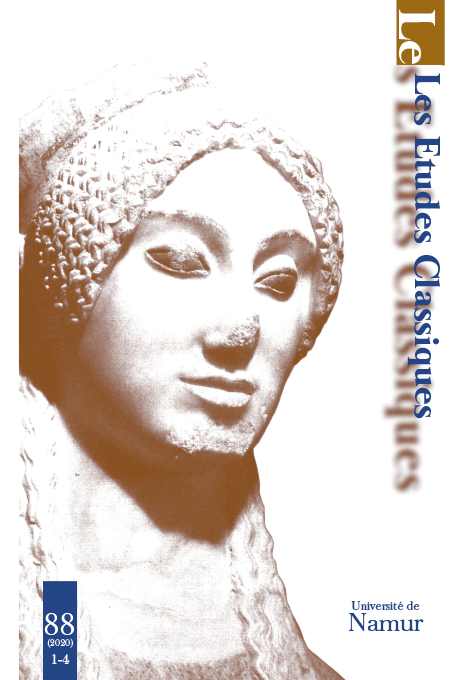 previous article in this issue previous article in this issue | next article in this issue  |

Preview first page |
Document Details : Title: Aegritudo Persicae ed Anthologia Latina nella critica del testo dei Carmina profana di Draconzio Subtitle: Due esempi Author(s): PAOLUCCI, Paola Journal: Les Études Classiques Volume: 90 Issue: 1-4 Date: 2022 Pages: 23-39 DOI: 10.2143/LEC.90.1.3291226 Abstract : À la lumière du riche et fertile binôme «imitation et critique textuelle», non sans faire référence à l’ensemble des outils ecdotiques de la philologie, deux passages de Dracontius sont discutés (Orest., 506-507 et Romul., 9, 520-521). Le point de départ est l’apparat critique de la récente édition des Carmina profana par Otto Zwierlein, où il y a des renvois explicites à l’Aegritudo Perdicae et à un poème de Luxorius dans l’Anthologie latine (310). De ces études de cas découlent des considérations méthodologiques utiles pour l’exégèse et la critique du texte de Dracontius. Dans le premier cas, la correction proposée par Peiper caede est acceptée (bien que revisitée et incluse dans une structure morpho-syntaxique différente), en considérant la leçon credo comme une note marginale interpolée. Dans le second cas, d’autres arguments sont fournis à l’appui de la correction onerata de Zwierlein et on fait une tentative pour défendre, à l’instar du texte de Dracontius, la leçon montibus dans l’épigramme de Luxorius. In the light of the fortunate and productive binomial of ‘imitation and textual criticism’, not without reference to all the ecdotal tools of philology, two passages of Dracontius are discussed (Orest., 506-507 and Romul., 9, 520-521), starting from the critical apparatus of the recent edition of Carmina profana by Otto Zwierlein, in which Aegritudo Perdicae and a poem by Luxorius in the Latin Anthology (310) are explicitly quoted. From these case studies, useful methodological considerations arise for the exegesis and criticism of Dracontius’ text. In the first case, Peiper’s correction caede is accepted (although revised and included in a different morpho-syntactic structure), considering the manuscript reading credo an interpolated marginal note. In the second case, further arguments are provided in support of Zwierlein’s correction onerata and, as in the same Dracontius’ text, the reading montibus is upheld in the epigram of Luxorius. |
|


